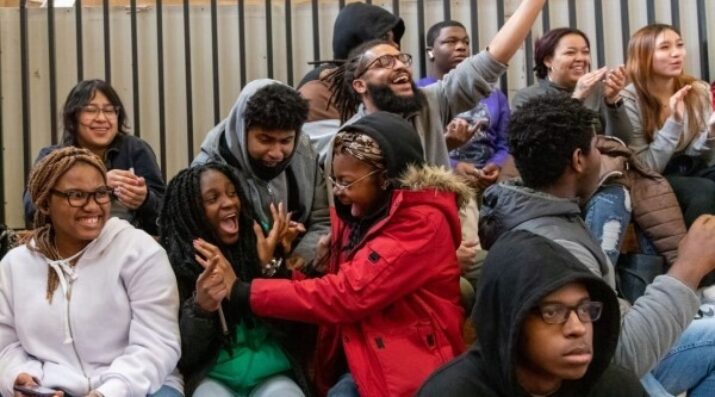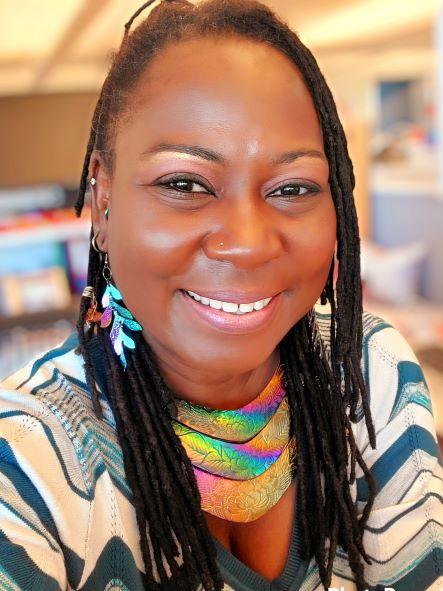Enabling Change
The Importance of Amplifying the Youth Voice
Topics

Next generation learning is all about everyone in the system—from students through teachers to policymakers—taking charge of their own learning, development, and work. That doesn’t happen by forcing change through mandates and compliance. It happens by creating the environment and the equity of opportunity for everyone in the system to do their best possible work.
Fostering genuine partnerships that prioritize student and family perspectives can ensure that every young person has the opportunity to thrive.
These days, students are not only navigating the hallways of their schools. They are also navigating the hallways of adolescence. It is a complex journey of academic pressures, social dynamics, and the constant growing pains of self-discovery. But what happens when, amidst this chaos, a young person feels consistently unheard or unseen? Imagine the weight of their unspoken thoughts, the frustration of dismissed ideas, and the growing sense of invisibility that can haunt their school experience. This isn't just a fleeting feeling; it's fuel to the growing fire of disconnection which can significantly impact a student's overall success and self-esteem.
As I recall my own experiences growing up, I understand the unique challenges and opportunities our young people face. My biggest concern in my high school years was how I was going to afford college. I often expressed this concern and it was often dismissed. I was told I had plenty of time to “figure it out” when I really didn’t. At every turn was a conversation about college goals, future plans, and FAFSA. I truly felt hopeless. Interestingly enough, the high school I attended had an amazing pathway partnership with the Academy of Travel and Tourism through the National Academy Foundation. This program was incredibly valuable to students like me aiming for college. I was referred to this program by one of my teachers. The same teacher that helped me find my voice through writing also took the time to listen to my concerns about my future. Her genuine care and attentiveness helped me forge a path toward my postsecondary education goals. This program existed because there were students much like myself who needed a way forward.
The Transformative Power of Partnerships
I’m a proud Boston Public Schools (BPS) alum and now I’m the manager of community partnerships and faith-based initiatives for BPS. I've seen firsthand the transformative power of education. Yet, I've also witnessed the consequences of dismissing the very voices we are meant to uplift: our students. That's why amplifying youth voices isn't just a bunch of buzzwords; this is a fundamental necessity for creating equitable and thriving schools and communities.
Because the youth’s perspective is often shaped by their lived experiences, they are invaluable in shaping policies and programs that directly impact their lives. We, as adults, often assume we know what's best, but without actively listening to and incorporating youth perspectives, we risk creating solutions that miss the mark entirely. We cannot afford to take such a risk.
This is where initiatives like the City of Boston's Office of Youth Engagement and Advancement (OYEA) and the invaluable work of BPS Family Liaisons come into play. OYEA’s mission to uplift the voices and advance the lives of young people ages 14-25 through city programs and services is a vital component of a city that prioritizes the wellbeing of its youth. By providing platforms for young people to engage with city government, OYEA empowers them to become active participants in shaping their own futures.
In every BPS school, BPS Family Liaisons are the critical link between the school, the student, and the family. They are not only advocates for parents and guardians but also play a significant role in amplifying the youth's voice itself in these ways:
Facilitating Communication
Liaisons bridge language and cultural barriers, ensuring that youth perspectives are accurately conveyed to school staff and administrators. They help students express their needs and concerns, even when they might struggle to do so on their own.
Empowering Student Advocacy
Liaisons work with families to support their children in advocating for themselves. They provide guidance on how to effectively communicate with school personnel and navigate the school system. This empowers students to become self-advocates.
Creating Safe Spaces
Liaisons often create spaces where students feel comfortable sharing their experiences and perspectives. They build trust with students, allowing them to express themselves freely.
Connecting Youth to Resources
Liaisons connect youth to resources and opportunities that can help them develop their leadership skills and amplify their voices.
Acting as a Conduit
Liaisons are a conduit of information between the school, the family, and the student. This allows the student to have their needs met and their voice to be heard by the correct people.
In my current role, I see the importance of this work on a daily basis. School partnerships should not be a one-way street. They must be collaborative efforts that center the voices of students as well as their families. When we ask our school-based partners how they are measuring success, we must encourage them to demonstrate how they are actively incorporating student feedback into their programs. This includes:
- How partners create spaces for students to share their experiences and ideas, and how they collaborate with educators and family liaisons to facilitate this
- How partners use student, school, and/or family feedback to improve programming
- How students are empowered to take leadership roles
- How partners work to ensure effective communication and engagement with students as well as their families to ensure the students' voices are heard
The Invaluable Benefits of a Culture that Supports Youth Voice
As a BPS alum, I know that our schools have the potential to be transformative spaces. However, we can only achieve this potential if we create a culture where youth and family voice is not only welcomed but actively sought out. By working alongside initiatives like OYEA, empowering our Family Liaisons, and fostering genuine partnerships that prioritize student and family perspectives, we can ensure that every young person has the opportunity to thrive.
Young people are the direct recipients of education. Their perspectives offer invaluable insights into what works, what doesn't, and what's needed to make learning more meaningful. When students feel heard, they're more likely to be engaged in their learning, leading to improved academic outcomes. Youth have unique perspectives on current trends, technologies, and social issues, which can help educators adapt curricula to be more relevant. Giving students agency and safe spaces to exercise their voice fosters a sense of ownership over their education. This empowers them to become active participants in their learning journey. It helps develop essential skills like critical thinking, communication, and problem-solving, which are crucial for success in life. When students feel empowered, they are more likely to have higher self esteem.
Youth voice can help identify and address inequities within the education system. By listening to diverse perspectives, educators can create a more inclusive and supportive learning environment for all students. It allows for the discovery of what is or is not working for different groups of students. Education should prepare young people for the future. By involving them in decision-making, we're helping them develop the skills and confidence they need to become active and engaged members of the community. We are encouraging engagement and helping young people understand their role in shaping their communities.
In essence, considering the youth voice is about recognizing that young people are not just passive recipients of education. It isn’t enough for them to simply go through the motions. It is important that they are seen and valued as active stakeholders with valuable perspectives that can contribute to creating a better learning experience for everyone.
Photo at top courtesy of Boston Public Schools.




